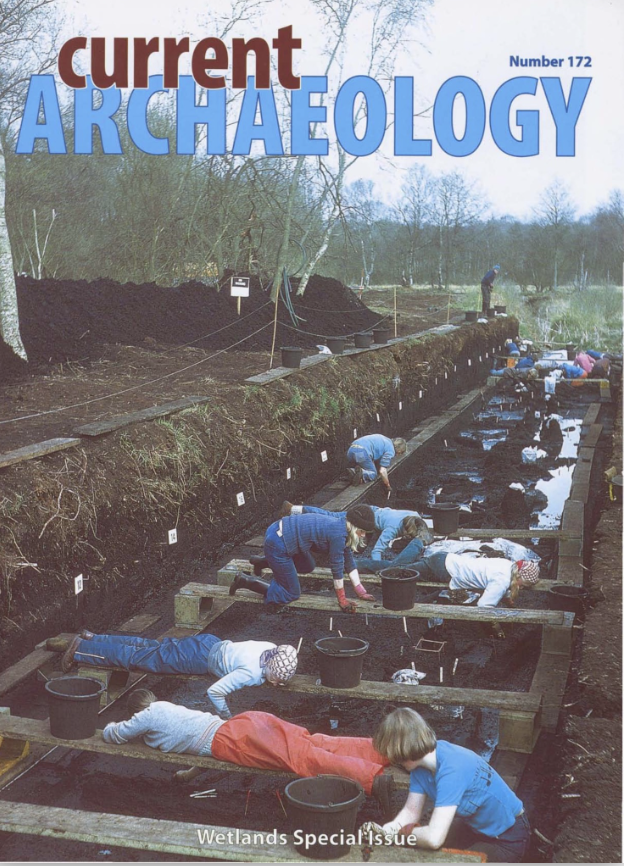This special issue of Current Archaeology is devoted to wetland archaeology. Wetland archaeology has one big advantage over dryland archaeology: preservation. A whole range of material – including most notably wood – is preserved that is not found in dryland sites. Over the past 30 years, English Heritage has conducted a massive investigation into the English wetlands, now coming to an end: what has come out of all this work? A major conference on Wetland Landscapes is being held by the British Academy on 23rd – 24th February 2001, and David Miles, the English Heritage Chief Archaeologist, asked us to produce this special issue of Current Archaeology to accompany this conference.
How was the whole project set up? The main progenitors were John Coles, former professor of European Prehistory at Cambridge, together with his wife, Bryony, now professor of Archaeology at Exeter; and Geoffrey Wainwright, the former Chief Archaeologist of English Heritage – who provided the money. We begin therefore with a joint interview with the Coles’ and Geoffrey Wainwright, revealing the real story behind the project.
The project was in four main parts, which form our four main articles. The project began in the Somerset levels, where the Coles’ laboured for 20 years, finding numerous timber trackways, including the Sweet Track, the oldest timber trackway in the world, now dated precisely to 3807 Be.
The largest project of all has been in the Fenland of eastern England. Here a massive fieldwalking campaign was undertaken by David Hall and others, and some half million hectares of land was walked, discovering over 2000 new sites.
In the North-West rather different problems were tackled, where there were rather large numbers of small but often deep bogs, and finds include the remarkable discovery of the Solway Cows. Then there were the Humber wetlands, where fieldwalking and excavation proceeded side by side.
The Science Diary makes a welcome return with a special ‘Wetlands’ issue, while John Coles provides a comprehensive survey of Wetland books.
Finally we look to the future: how are we to preserve something of our wetlands? Archaeologists need to co-operate with other conservationists, and so we look at Ramsar, the international Convention on Wetlands: the issues now are about conservation and management.

